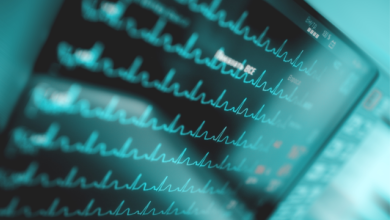Search results
Author(s):
Nabil El-Sherif
,
Gioia Turitto
,
Mohamed Boutjdir
Added:
3 years ago
Since its initial description by Jervell and Lange-Nielsen in 1957,1 congenital long QT syndrome (LQTS) has been the most investigated cardiac ion channelopathy. A prolonged QT interval on the surface ECG is a surrogate measure of prolonged ventricular action potential duration (APD).
Congenital as well as acquired alterations in certain cardiac ion channels can affect their currents in such a…
View more
Author(s):
Benjamin L Freedman
,
Timothy R Maher
,
Madison Tracey
,
et al
Added:
10 months ago
Author(s):
Brenton S Bauer
,
Anthony C Li
,
Jason S Bradfield
Added:
3 years ago
Ventricular arrhythmias (VA) are commonly associated with structural heart disease and have substantial impact on patient outcomes and health system costs. Within the realm of cardiomyopathy (CM), there has been substantial progress with respect to ischaemic CM (ICM) in the understanding of infarct related scar biology and scar-mediated ventricular tachycardia (VT).
This has led to interventions…
View more
Device-Based Approaches to Modulate the Autonomic Nervous System and Cardiac Electrophysiology
Author(s):
William J Hucker
,
Jagmeet P Singh
,
Kimberly Parks
,
et al
Added:
3 years ago
Article
Body Surface Electrocardiographic Mapping for Non-invasive Identification of Arrhythmic Sources
Author(s):
Ashok J Shah
,
Meleze Hocini
,
Patrizio Pascale
,
et al
Added:
3 years ago
Article
Author(s):
Tina Baykaner
,
Junaid Zaman
,
Paul J Wang
,
et al
Added:
3 years ago
Treatment of atrial fibrillation (AF) classically focuses on eliminating triggers near and from the pulmonary veins, which may initiate AF. However, the 1–2 year success rate of pulmonary vein isolation (PVI) remains 40–50% for persistent AF1,2 and 50–65% for paroxysmal AF,3–5 while supplementary linear lesions or extensive ablation at electrogram-targets have had disappointing results and may…
View more
Author(s):
Pascal Vranckx
,
Marco Valgimigli
,
Hein Heidbuchel
Added:
3 years ago
Anticoagulation with vitamin K antagonists (VKAs) has been used for the long-term treatment and prevention of thromboembolic diseases and for stroke prevention in atrial fibrillation (AF) for the past half century. Until the last decade, VKAs were the only oral anticoagulant (OAC) agents available, and warfarin remains the most commonly prescribed OAC worldwide.1 Direct oral anticoagulants (DOACs…
View more
Long QT Syndrome Modelling
Author(s):
Luca Sala
,
Massimiliano Gnecchi
,
Peter J Schwartz
Added:
3 years ago
Article
Author(s):
Cristina E Molina
,
Jordi Heijman
,
Dobromir Dobrev
Added:
3 years ago
Optimal cardiac function depends on appropriate rate and force of contraction, with specific cardiac regions having developed particular beat-to-beat properties depending on their individual functions. For example, isovolumetric contraction time is shorter in the right ventricle (RV) than in the left ventricle (LV). At the cellular level, cardiac function is regulated by regional cardiomyocyte…
View more












 « First
« First